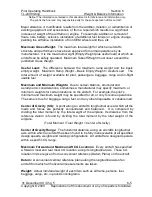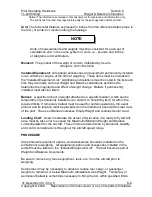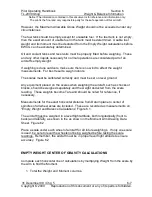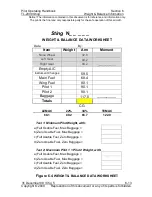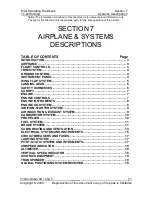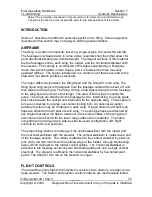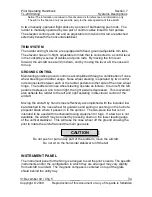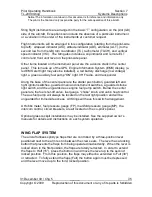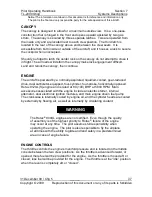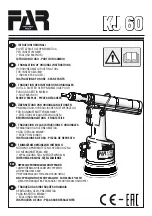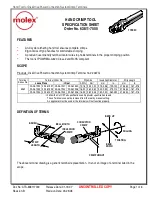
Pilot Operating Handbook
Section 7
TL-2000
Sting
Systems Descriptions
Notice! The information contained in this document is for reference and information only.
The pilot is the final and only responsible party for the safe operation of this aircraft.
31 December 09 / Chg 5
______
7-3
Copyright © 2009 Reproduction of this document or any of its parts is forbidden.
INTRODUCTION
Section 7 describes the different systems specific to the Sting. Some equipment
described in this section may not apply to all Sting serial numbers.
AIRFRAME
The Sting is a carbon-composite, low-wing, single-engine, two-seat LSA aircraft.
The fuselage is laminated and, in some areas, is sandwiched foam that allows for
good structural integrity at a nominal weight. The largest sections of this material
are the fuselage section, each wing, the rudder, and the horizontal stabilizer with
the elevator. The canopy is constructed of Plexiglas supported by a fiberglass
frame that pivots forward on two hinges, and it is fastened by three manually
operated latches. The engine is fastened to a cradle mount that is secured to the
firewall at four attach points by steel bolts.
The major difference between the Sting Sport and the Sting S3 is the wing. The
Sting Sport wing projects 90 degrees from the fuselage outboard for about 22” and
then tapers to the wing tip. The Sting S3 has a fully tapered wing from the fuselage
to the wing tip and is about a foot longer. The area of both wings is exactly the
same. The wings are attached to the fuselage by two, interlocking, box-type spars
that cross beneath the cockpit and interlock with the opposite wing. These spars in
turn are connected by a large over-center locking bolt. An optional six-gallon
auxiliary fuel tank may be contained in each wing. Hinged ailerons and split-type
flaps are affixed to the aft spar of each wing. The split-type flaps are attached by
five hinges that allow the flap to rotate out of the lower surface of the wing when
extended and are flush with the lower wing surface when retracted. The cabin
compartment is arranged as a side-by-side two-seat configuration with flight
controls for both crew positions.
The empennage section is made up of the vertical stabilizer with the rudder and
the horizontal stabilizer with the elevator. The vertical stabilizer is molded as a part
of the fuselage section. The rudder is attached to the vertical stabilizer by slide-on
pins and a rod that runs down the leading edge of the rudder, through ball bearing
races, which connects to the rudder control cables. The horizontal stabilizer is
attached to the fuselage section by two horizontal guide pins and a single vertical
steel bolt. The elevator is affixed to the horizontal stabilizer by five bolted pivot
points. The Sting S3 trim tab on the elevator is longer.
FLIGHT CONTROLS
The aircraft’s primary flight control system consists of two ailerons, a rudder, and a
large elevator. The aileron and elevator control surfaces are mechanically linked



